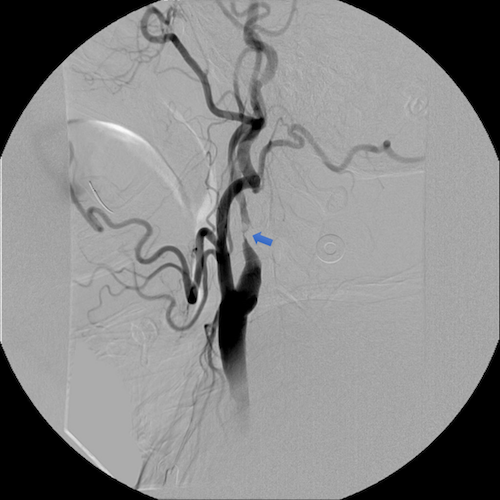JAMA study: How stroke patients can best control blood sugar

DALLAS – July 25, 2019 – Aggressive methods for reducing high blood sugar immediately following a serious stroke are not more effective than standard, lower risk treatments, according to a new study that offers clarity to a long-debated issue in stroke care.
Research from UT Southwestern Medical Center shows patients with Type 2 diabetes who have an acute ischemic stroke have equally favorable results when their blood sugar levels are controlled with intermittent insulin shots compared with continuous insulin treatment using an IV.
The study, published in the Journal of the American Medical Association, is the first evidence-based validation of glucose-control guidelines for blood sugar management in patients with hyperglycemia after stroke, said Dr. Christiana Hall, one of the study’s four clinical principal investigators and an Associate Professor of Neurology and Neurotherapeutics at UT Southwestern’s Peter O’Donnell Jr. Brain Institute.
“The study upholds the most common standard of care practice utilized over the years. It’s what our guidelines recommend, even though we never had strong data to support them,” Dr. Hall said. “With intermittent insulin shots there is less chance for blood sugar going too low.”
People with hyperglycemia, or high levels of glucose, who have an acute stroke may have greater mortality, stroke severity, and functional impairment when compared with those with normal blood sugar. Doctors across the world have debated whether intensive glucose management, which requires the use of IV insulin to bring blood sugar levels down to 80-130 mg/dL, or standard glucose control using insulin shots, which aims to get glucose below 180 mg/dL, might lead to better outcomes after stroke.

Results from the Stroke Hyperglycemia Insulin Network Effort (SHINE) study, a multisite clinical study of some 1,100 patients, provide a clear answer: Intense glucose therapy increased the risk of very low blood glucose (hypoglycemia) and required a higher level of care, such as increased supervision from nursing staff, compared with standard treatment. However, Dr. Hall said, recovery from stroke in the two groups of study patients was the same three months after treatment.
Seventy sites across the country participated in the trial, including UT Southwestern and Parkland Memorial Hospital in Dallas. Participants were required to have a history of Type 2 diabetes or blood glucose greater than 150 and be enrolled in the randomized trial within 12 hours of stroke onset. There were two treatment groups: patients receiving intensive glucose management and those undergoing standard glucose control, both for up to 72 hours.
The study was supported with funding from the National Institute of Neurological Disorders and Stroke (NINDS), part of the National Institutes of Health.
About UT Southwestern Medical Center
UT Southwestern, one of the premier academic medical centers in the nation, integrates pioneering biomedical research with exceptional clinical care and education. The institution’s faculty has received six Nobel Prizes, and includes 22 members of the National Academy of Sciences, 17 members of the National Academy of Medicine, and 15 Howard Hughes Medical Institute Investigators. The full-time faculty of more than 2,500 is responsible for groundbreaking medical advances and is committed to translating science-driven research quickly to new clinical treatments. UT Southwestern physicians provide care in about 80 specialties to more than 105,000 hospitalized patients, nearly 370,000 emergency room cases, and oversee approximately 3 million outpatient visits a year.
